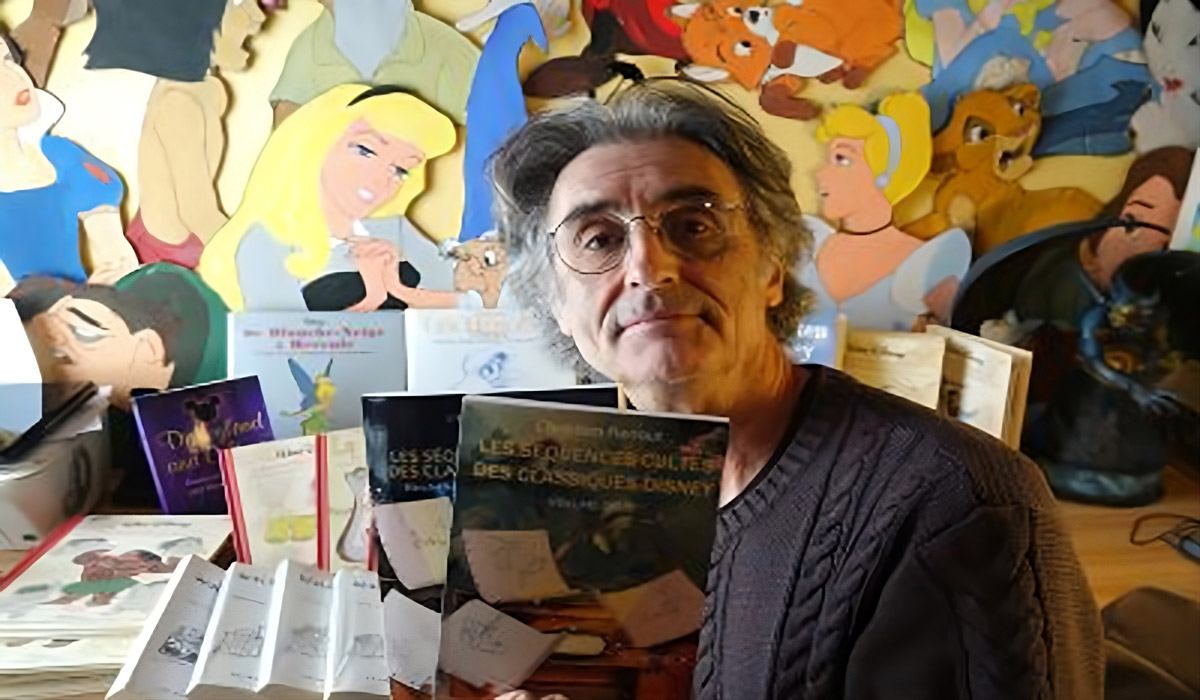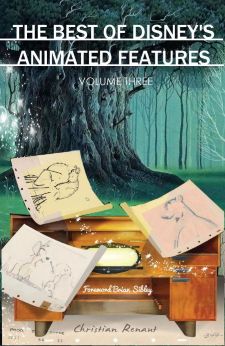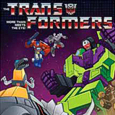You may remember noted Disney historian Christian Renaut’s first two books entitled The Best Of Disney’s Animated Features. Now, here comes the third and last volume devoted to the Walt Disney classics supervised by the great maestro himself – even if he wasn’t 100% at the helm on everything by this time.
For this volume, the author was lucky to interview many of the artists from all departments who contributed to them. By quoting them, but also after in-depth research, never-before revealed stories and information can be found. In addition, following the long process of creation, the author focuses on some unsung artists: storymen, layout people, clean-up artists, assistants, directors, composers, and of course animators – but not necessarily the most famous ones, even though the Nine Old Men are very often mentioned and quoted. With this book, the reader is within the team of creators, behind the scenes. There is no iconography, but rather a wealth of information that any Disney buff will be happy to learn.
So, is your computer or your mobile, or your DVD/BluRay ready? As you watch each extract, this book informs you scene by scene on what it took to achieve those unforgettable moments of Disney animation.
But before diving into these gems under the guidance of this wonderful book, why not take some time chatting with the author, researcher, and all-along Disney fan himself?
Animated Views: Christian, you became a fan of Disney animation as a kid. How did that passion transform progressively through time up to becoming a Disney historian?
Christian Renaut: There was a time when I started to ponder what could come out of that passion. I needed to be active about it. What is more, I wanted a way to try to go and visit the Burbank Studio I had so often dreamt about, not to mention the possibility to meet the artists. All this seemed out of reach, but after many ups and downs, I could finally fulfill that dream. But ever since that day of 1987 when I stepped onto the Disney lot for the first time, I have learnt a tremendous lot and it seems to me I have matured and become more of a historian.
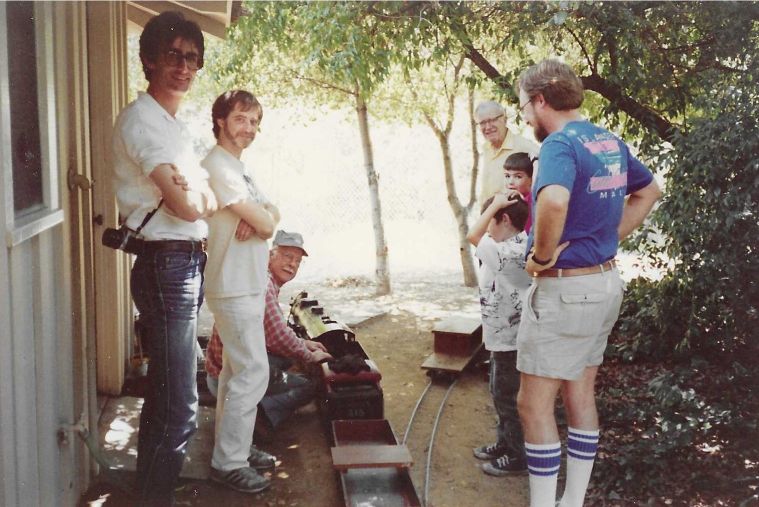
AV: Your two previous books were successes. What kind of reactions did you get from your readers? How do you feel about it?
CR: They are critical successes, but it is hard to sell books about Disney without images. It is a real challenge. Sorry for sounding a bit pretentious, but I think that few people in Europe have met as many Disney artists through the years, and scattering hundreds of quotations by them about their work is certainly an asset. Readers know they will find new and unpublished information thanks to my long-time thorough researches and contacts with the old-timers of the studio. It is indispensable because now there are many books published about Disney, so you have to offer something more. What readers also appreciate is that I also deal with lesser-known artists whose names they have often encountered, but it is true that many books only focus on the Nine Old Men. Lastly, they like the fact I study the animation of course, but also all departments from Ink and Paint to Clean-up.
AV: What are the films you explore in this third volume?
CR: The period goes from 1953 to 1967: Peter Pan, Lady And The Tramp, Sleeping Beauty, 101 Dalmatians, The Sword In The Stone, Mary Poppins, and The Jungle Book.
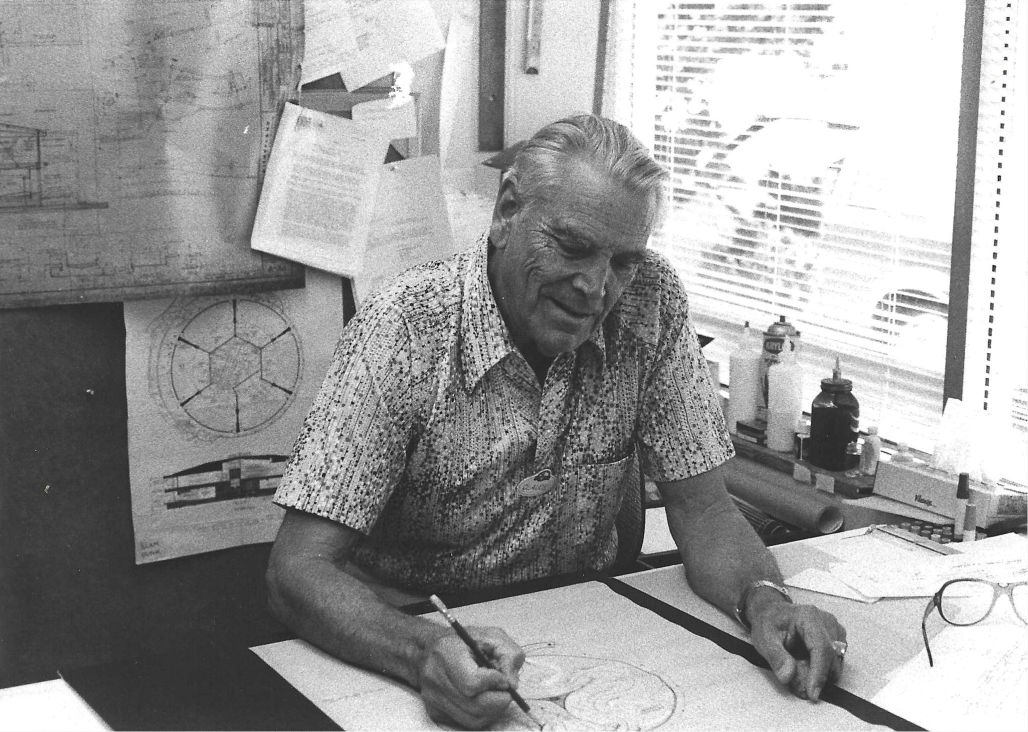
AV: During your research, what are the most interesting things you discovered on that period at Disney?
CR: The fact that Walt withdrew from the Animation department because he was wrapped up in Disneyland and TV left the department more free, and he could rely on a very skilled trio of directors: Luske/Geronimi/Jackson. Yet, he was still around, and reading the transcripts of story meetings with Walt and his collaborators is fascinating. I also discovered the incredible battles of egos and tensions between artists. For instance, the relationship between Bill Peet and Walt is a gem. I was lucky to have access to very private sources.
AV:You led interviews with all the Disney legends, but another interesting aspect of your work is setting a light on unsung heroes of the Disney studios. Can you tell us about some of them and how you researched about them?
CR: Many of those unsung artists I met really suffered from having been left along the road. They thought they deserved more recognition. It came up over and over, and I quickly understood that the Nine Old Men knew they were the best and completely ruled the department. Only some like Eyvind Earle, Clyde Geronimi or Bill Peet fought them. That’s why my books try to pay a tribute to artists like Clair Weeks, Hal King, Harvey Toombs, Joe Rinaldi, I. Takamoto, Ken Hultgren, Jerry Hathcock, Ed Penner, Mc Laren Stewart, Dick Lucas, Dale Oliver, Homer Jonas, Walt Peregoy Don Da Gradi, Don Griffith, Walt Stanchfield… and many others. It was hard to find information about them, but thanks to the help of other artists, but mainly to the families of those unsung artists, it was possible. And they were very proud and even moved that someone should be interested in them, for instance the son and daughter of Joe Rinaldi or the two sons of Hal King, and so many others.
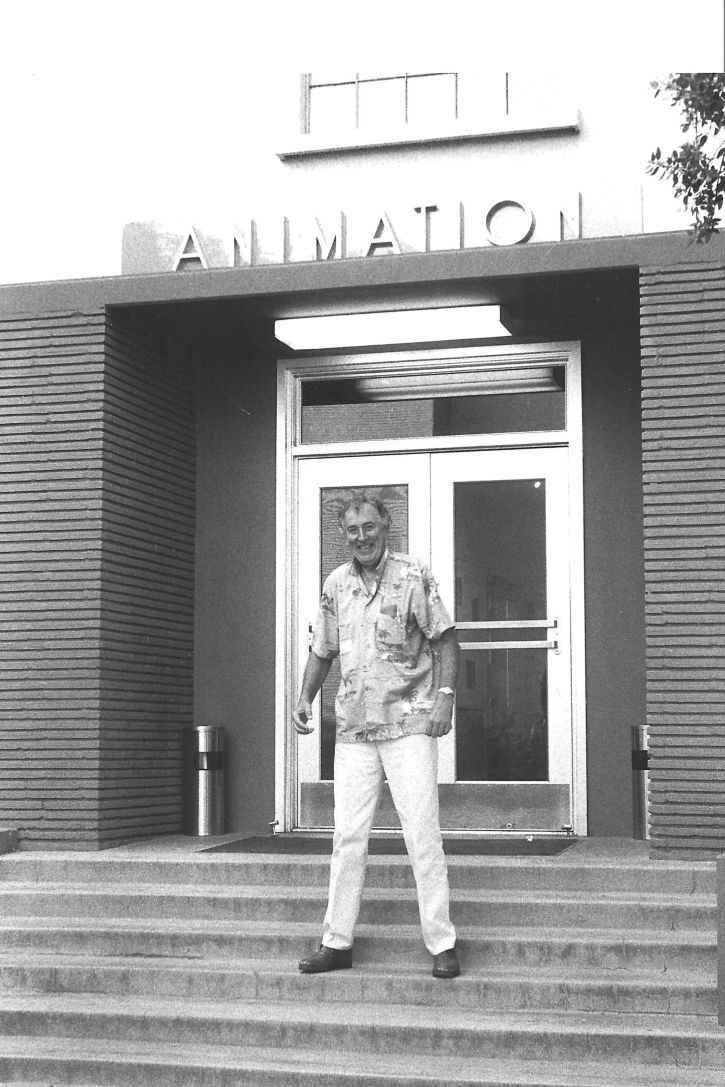
AV: Reading your book, we can feel your enthusiasm for films like Jungle Book, but you seem more lukewarm regarding Sleeping Beauty. How do you explain that?
CR: I also try to be as unbiassed as possible. Not easy. There are two sequences for each of those films, so it confirms this. In my text, I underline the magnificent backgrounds of Sleeping Beauty, but many agree that the scenario and the personalities are not successful. The scenario of The Jungle Book is equally poor, but the personalities and the animation are outstanding. In my lectures, the students often ask me, “What is your favorite film?” Although I am tempted to answer Fantasia, I mostly answer that it depends what your focus is on: scenario, animation, personalities, relationships, aesthetics, music etc… For instance, for me there is no film with as much charm as Lady And The Tramp.
AV: Indeed, your approach is both historical, with facts, and personal, as you put a lot of yourself in the vision of the films you treat. Can you explain that choice?
CR: This is not my intention, but when you deal with an artform which is so closely associated with your childhood and youth, I suppose there is no escaping that. In addition, the fact I met those artists has given me a more human approach to those films. I know what happened before and during the making of those films: some got sick, some got fired, some got drunk, some got bigheaded, some evolved, some didn’t. It makes it all so much more real and moving.
AV: Is it simple today to be a freelance animation historian and publish books?
CR: No, definitely not. Without going into details, if you want to write with complete freedom and go in-depth about Disney films, you can’t have the copyrights for illustrations, even though your only point is to highlight the quality of the films and praise the work of all those artists. Or you have to be an insider of the company.
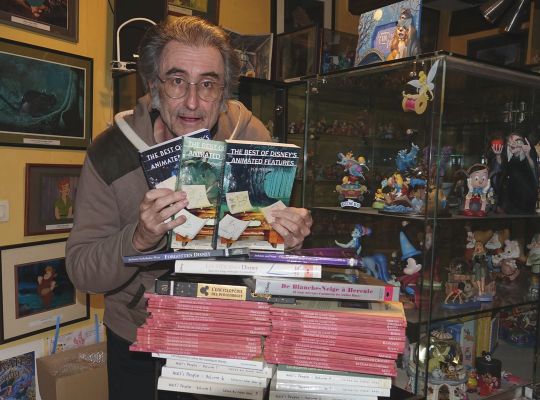
AV: Now that this great series is complete, what are you up to?
CR: I have written a chapter of the book The Disney Menagerie for Mc Farland publications in the USA. I am the only European in this collective book. I have also quasi completed the rewriting and updating of The Disney Heroines book in French only. I will try to find a publisher who is ready to deal with Disney for images, but I doubt I will find it. And, scoop, I am in the midst of something more autobiographical which tells the incredible journey of my passion for Disney.
With thanks to Christian Renaut for his time and personal photos.


